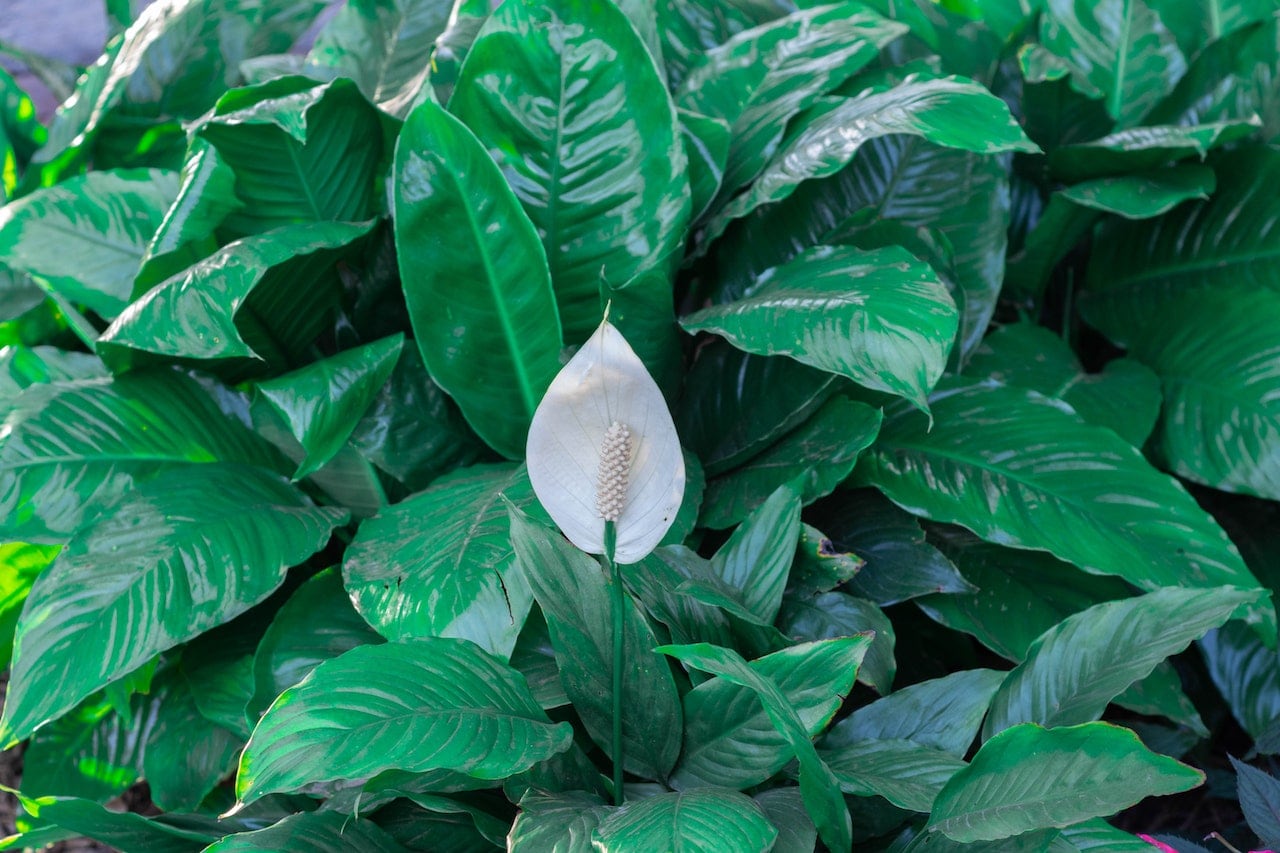The lilies, those elegant blooms that grace our gardens and homes, adding a touch of class and serenity. But amid the world of lilies, there’s a subtle yet significant difference between two popular varieties: the Peace Lily and the Calla Lily. Today, let’s unravel the mysteries of these enchanting flowers, exploring their nuances, growth patterns, and the unique care they demand.
If you want to show off your peace lilies then my personal recommendation is to use a liquid leaf shine Click here to check it out on Amazon.com
Is a Calla Lily the Same Thing as a Peace Lily?
The short answer? No. While both are lilies, Peace Lilies (Spathiphyllum spp.) and Calla Lilies (Zantedeschia spp.) belong to different genera, making them distinct species. If you have a sensation peace lily then check out my recent article Sensation Peace Lily ( Step By Step Guide ).
Growth
Peace Lily: Picture a peace lily. Its lush, dark green leaves fan out gracefully, creating a backdrop for its striking white flowers. Peace lilies prefer to keep their beauty confined indoors, thriving in warm, humid environments.
Calla Lily: Now, shift your focus to the Calla Lily. This plant boasts broader, arrow-shaped leaves, showcasing a spectrum of colors beyond the standard green, including deep purples and vibrant yellows. Calla lilies, unlike their peace-loving counterparts, often bask outdoors, adorning gardens with their presence.
Foliage
Peace Lily: Peace lilies are known for their glossy, oblong leaves that elegantly arch towards the ground. Their leaves are typically deep green, occasionally veering into shades of dark emerald, creating a rich contrast against the pristine white of their blossoms.
Calla Lily: Calla lilies, on the other hand, boast broader leaves, shaped like arrowheads. These leaves are often spotted or variegated, adding an extra layer of visual intrigue to these already captivating plants. If you love variegated peace lilies then check out my recent article ( Top 3 ) Variegated Peace Lily Varieties.
The Size Of The Plants
Peace Lily: Compact and relatively petite, peace lilies are perfect for indoor spaces. They seldom exceed the height of a couple of feet, making them ideal for tabletops, shelves, or corners that need a touch of natural beauty.
Calla Lily: Calla lilies, in contrast, are more robust and can grow significantly taller, sometimes reaching heights of up to three feet. This makes them a statement piece in gardens, demanding attention with their imposing presence.
Light
Peace Lily: These lilies are the introverts of the plant world, preferring low to medium indirect light. Too much direct sunlight can scorch their delicate leaves, leading to unsightly brown spots.
Calla Lily: Calla lilies, being the extroverts, crave sunlight. They flourish in bright, indirect light, and while they can tolerate some shade, they truly thrive under the sun’s gentle caress.
Flowers
Peace Lily: Ah, the pièce de résistance of peace lilies – their flowers. Delicate, white, and often accompanied by a hood-like leaf known as a spathe, these blossoms exude an air of tranquility. They symbolize harmony, making them a popular choice in homes and offices. If you want to know how to take care of variegated peace lilies then check out my recent article Variegated Peace Lily Care ( Step By Step Guide ).
Calla Lily: Calla lilies, too, bear a unique floral structure. Their flowers consist of a central spike, known as a spadix, encased within a petal-like structure called a spathe. These blooms are not only visually captivating but also come in a wider range of colors, including shades of pink, purple, yellow, and even black.
Growing Medium
Peace Lily: Peace lilies thrive in a well-draining potting mix that retains moisture without becoming waterlogged. A mix of potting soil, perlite, and orchid bark provides the ideal growing medium, ensuring the plant’s roots stay healthy and happy.
Calla Lily: Calla lilies prefer slightly acidic to neutral soil. A mix of garden soil and organic compost provides the necessary nutrients, promoting lush foliage and vibrant blooms. Good drainage is crucial, preventing waterlogged roots that could lead to rot.
Roots and Rhizomes
Peace Lily: Peace lilies typically grow from rhizomes – horizontal, underground stems that give rise to new shoots and roots. These hardy rhizomes store energy, enabling the plant to withstand periods of drought.
Calla Lily: Calla lilies, too, sprout from rhizomes. These robust structures help the plant survive adverse conditions, allowing it to bounce back after harsh weather or environmental stressors.
Culture
Peace Lily: Peace lilies are relatively low-maintenance, making them a favorite among indoor gardeners. They enjoy regular watering, with the soil kept consistently moist but not waterlogged. A monthly dose of balanced liquid fertilizer during the growing season keeps them nourished and thriving.
Calla Lily: Calla lilies, while not overly demanding, require specific care to truly flourish. Adequate sunlight, well-draining soil, and regular watering during the growing season are essential. Additionally, feeding them with a balanced, water-soluble fertilizer every 2-3 weeks enhances their growth and encourages bountiful blooms.
The Difference Between Caring for Calla Lilies and Peace Lilies
Caring for these lilies boils down to understanding their unique needs. Peace lilies demand a humid environment, making them perfect bathroom companions. Regular misting or placing them near a humidifier ensures they remain content.
Calla lilies, on the other hand, thrive outdoors with their roots well-established in the ground. Adequate sunlight and proper watering are crucial. During winter, it’s advisable to dig up the rhizomes and store them indoors until spring, safeguarding them from frost.
Fake Lilies: Faux Lilies
In the quest for beauty, some resort to artificial alternatives. While faux lilies may seem like a convenient solution, they lack the natural charm and vitality of real plants. Moreover, they don’t contribute to the environment, missing out on the air-purifying qualities that living lilies, particularly peace lilies, bring to indoor spaces.
